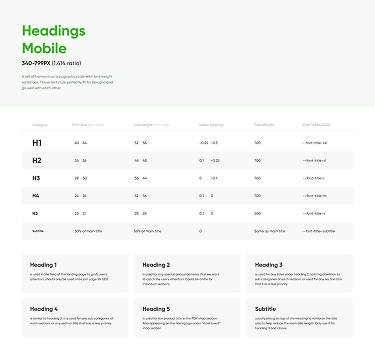Before the Nanoleaf website had an established design system, it appeared disorganized and lacked a cohesive, professional look. Each page felt disconnected, with no visual consistency across the site, which negatively impacted the brand’s identity. While we did use a consistent color palette and font family, there was no structured system in place to unify the design.
To address this, I began by thoroughly researching and studying well-established design systems to understand best practices. This foundational work guided the creation of a fully functional design system for Nanoleaf. Through this process, I not only developed a robust and scalable design solution but also gained invaluable knowledge and experience in systematizing design at scale.

